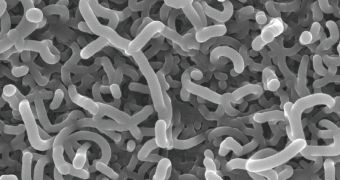Usually, nuclear reactors use multiple stages to turn radiation into electrical energy. For example, first, uranium nuclei are split through nuclear fission, when energy is released in the form of heat and additional radiation. The heat resulted from the nuclear reaction is then used to turn water into Steam, which is pumped into steam turbines that convert the thermal energy of the steam into mechanical work. The rotation of the turbine engine is subsequently transferred to the electrical generator, thus producing electric energy.
The conversion process used in conventional nuclear reactors is somehow complex for most applications, that is why researchers believe that materials that could turn radiation directly into electrical energy could do better and may be used for the next generation of satellites, spacecrafts and even to power vehicles here on Earth.
The first attempts to create such a material were carried out in the 1960s, when both the US and the Soviet Union used thermoelectric materials to power spacecrafts. NASA's Pioneer mission is just one example of the use of materials that convert radiation directly into electric energy. Known as 'nuclear batteries', these devices could power satellites by harnessing the energy released either through nuclear fission or through radioactive decay.
However, thermoelectric materials have too low efficiency to be used in practical applications. Alternatively, researchers believe that, by using the energy of radiation rather than that of heat, they can boost the efficiency of these materials.
Scientists Liviu Popa-Simil, former Los Alamos National Laboratory, nuclear engineer, and Claudiu Muntele, from the Alabama A&M University, revealed that materials might be able to produce up to 20 times more electrical energy by converting radiation rather than converting heat. The tests were conducted on carbon nanotubes containing gold, coated with lithium hydride. Radiation emitted by radioactive materials collides with the gold particles inside the nanotube, which determines an emission of high-energy electrons.
The electrons released by the gold particles are then collected by the carbon nanotubes and re-directed towards the lithium hydride layer, thus creating a current flow. "You load the material with nuclear energy and unload an electric current," said Popa-Simil.
"I believe this work is innovative and could have a significant impact on the future of nuclear power," says US Department of Energy's Los Alamos National Laboratory, David Poston.
Although the new materials developed by Popa-Simil could create devices small enough to power future space probes, air and land vehicles, perfecting the technology could take several more years. According to Popa-Simil, at least a decade would be required to build a prototype of the radiation-to-energy converter.

 14 DAY TRIAL //
14 DAY TRIAL //